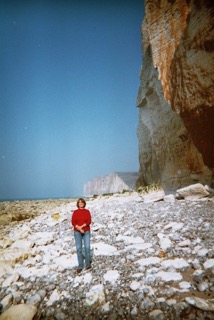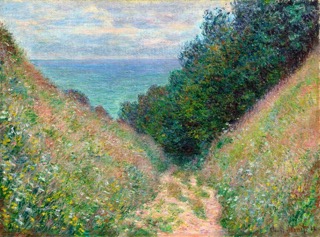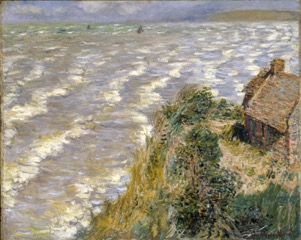They Took Me Out on the Water
 Tuesday, September 26, 2017 at 7:41PM
Tuesday, September 26, 2017 at 7:41PM I continue my “Ocean People” series with some reflections on my trip last week to New England and time on the water with dear old friends.
“Let’s take my boat out onto the water.”
Last week, within an hour of arriving at the homes of Sally and Susan, two dear old friends in East Boothbay, Maine and Wolfeboro, New Hampshire, they each invited me to go out sailing and kayaking. They both live where water laps right outside their window.
Ocean and lake lover that I am, I was happy to oblige, but I didn’t tell them I was nervous about my skill and my stomach. I have bad memories of a stern sailing uncle who barked orders to us scared shivering young crew. Not to mention all the times I’ve barfed over the side on whale watching trips. I hoped not to put us in danger or embarrass myself.
Not to worry. Sailing with these kind older women was no “man against nature” ordeal. We did not crash against waves or try to go fast and rough, although I’m sure they were capable of that and could have handled a storm. Both women were the only children of sailing fathers, who taught their daughters well. Indeed, Sally sails her father’s 1965 boat, Priscilla, and Susan reminded me that when she and I were adolescents together at this lake, her father taught us to canoe.
In this past Sunday’s New York Times Magazine, which features pictures of how and where people in China, Iran, Estonia, Italy, Guinea and Japan take summer vacation, it’s all about water, and the interviewer notes how many families go back to the river or beach or lake their parents took them to. Both Sally and Susan spent their childhoods on these same Maine and New Hampshire waters, and after years away have returned there in retirement.
PriscillaThree days in a row I was on the water with these women. (Sally and I also took a ride on a quiet electric boat around the brackish Maine inlets with Sean, a hip naturalist, seeing eagles, eating seaweed, meeting a lobsterman, nearly running aground in the mud in the dramatic tides.)
These graceful excursion have been gliding and glistening in my memory ever since I got home, filling me with a sense of peace and depth I associate with prayer. Some spiritual insights from sailing with Sally and Susan and Sean:
- Different Kinds of Sailors: Sally told me that soon after she moved to Boothbay and joined the traditional, yet informal, yacht club she was asked (by the male leadership) to improve the “Women Sailors” program because they weren’t organized enough. Sally figured out they didn’t want to be organized, to plan sails far in advance. And that they liked to talk and eat before going on a sail. (She and I also talked and ate –lobster roll!- as we prepared to sail.) She also said her group decided to start taking out older former members who no longer can sail on their own – last week she took out a woman with Alzheimer’s for probably her last sail. Sailors don’t always bark commands and terrify the crew.
-Deep Knowing: These folks really knew their boats and the water where we sailed. “Watch out for the shallow rocks here,” Susan said as we kayaked around Stamp Act Island in the middle of Lake Wentworth. “Pull in the jib and we’ll come about,” warned Sally, and I instinctively ducked, surprised that I remembered from 55 years ago the danger of the swinging boom as we tacked – even some of the terms came back – but this big beautiful boat had a higher boom that would not crack an unsuspecting head. Sean knew the exact timing of the dramatic Maine tides and saved us from a potentially dangerous current. These New Englanders knew their water and their craft, and even I remembered a little bit.
-Quiet Dancing. I think of women as gabbers, I certainly can be. But there were long stretches of silence as we glided on the lake and as we sped along the ocean. I was trying to be a good guest and I remembered that crew should not distract the captain. But mostly it was the quiet of the water that inspired me to keep quiet. Even the ocean seemed quiet. It made a big difference that all three boats were quiet – sailboat, kayak, electric boat. Huge power motor boats announce their dominance, and both motor and captain like to show off. Our boats glided with the water; if we were dancers, the water was leading, we were following.
-Good Stewardship. My two friends are happily retired after long, hard working careers, but they are not sitting around eating bonbons. Sally took me to a lecture at her church by a local marine scientist about climate change, which is devastating the Gulf of Maine. Susan told me that the next day she would be down at the public docks encouraging boaters to take advantage of the local Lake Association’s free boat wash for invasive species, and that later she would go to a meeting of the State Lake Association Board in Concord, NH, which is drafting legislation to reduce coastal erosion.
My boat vacation was not just fun, but spiritual. I felt like I had been on retreat, with all that quiet and gliding. Maybe my time on the water will remind me of some styles of prayer and meditation: don’t get hung up on organization, remember to take others along, learn from elders, remember that you do know some things already, keep quiet, follow the dance, and be a good steward of whatever environment you’re in. Happy sailing.
Copyright © 2017 Deborah Streeter











